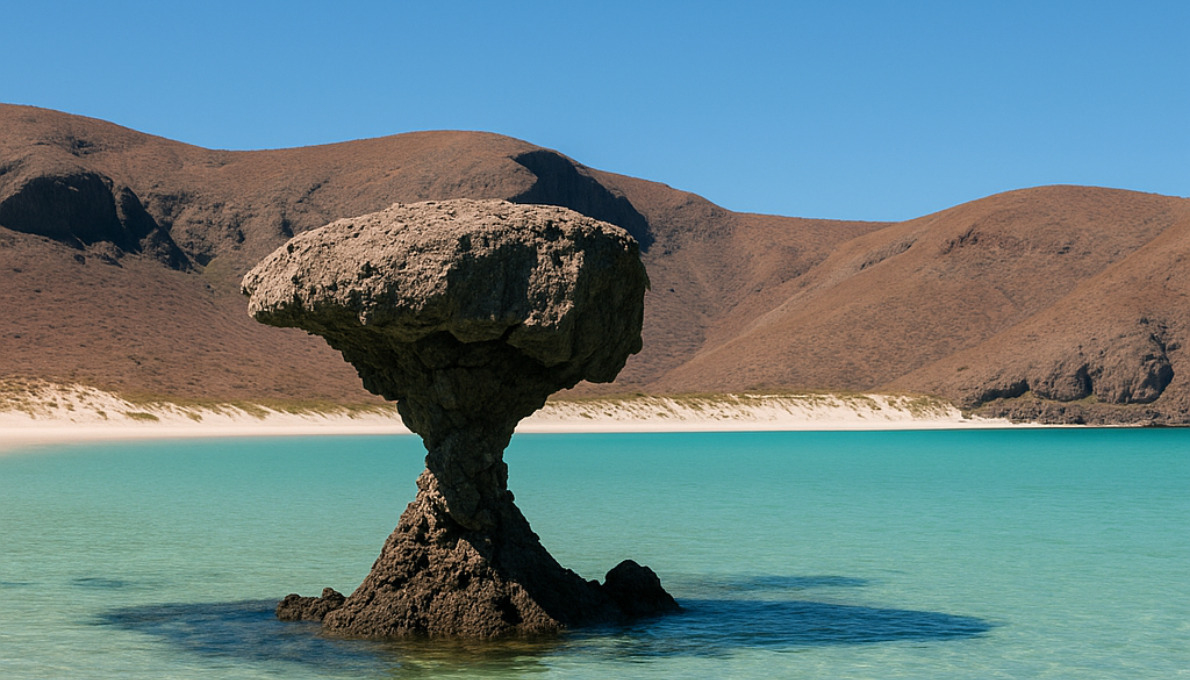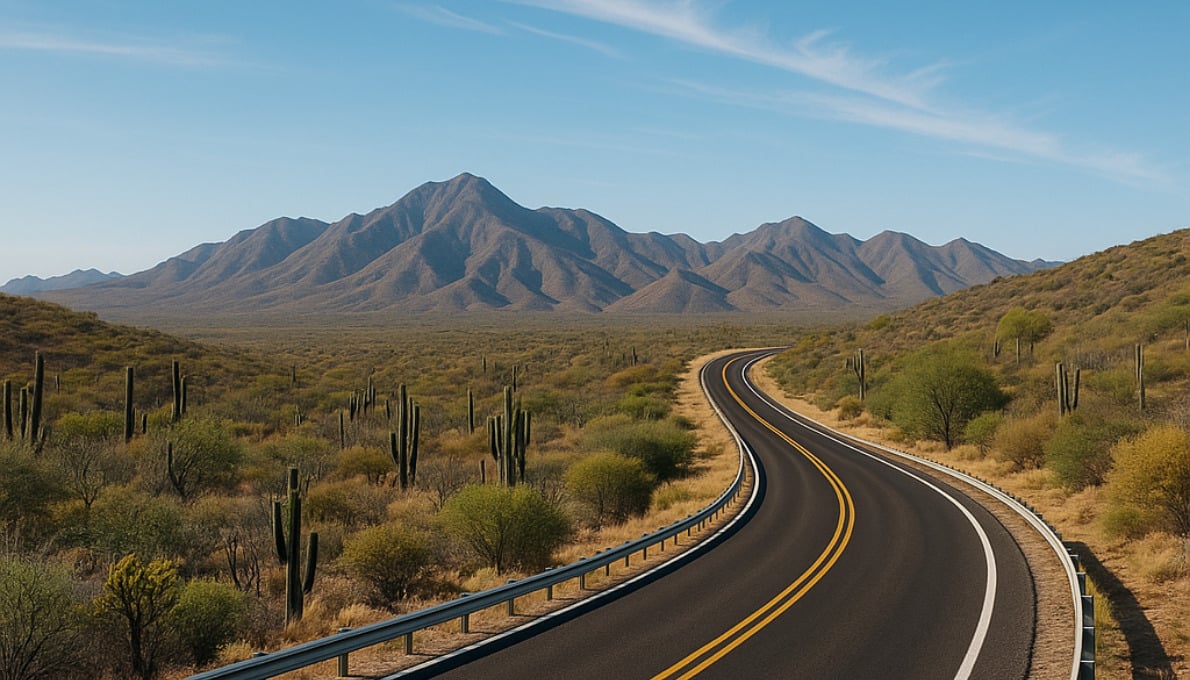Exploring the Cabo to La Paz Route: What You Need to Know
Is it safe to travel from Cabo to La Paz? Absolutely! The journey is generally safe when you take the right precautions. I’ve made this beautiful drive countless times, and it’s one of my favorite stretches of road in all of Baja.
The road connecting these two jewels of Baja California Sur is a well-maintained, fully paved highway stretching about 157 km (98 miles). You’ll be treated to some of the most stunning desert and coastal landscapes Mexico offers during this relatively short 2-2.5 hour drive.
Most travelers have smooth, worry-free experiences when they follow some simple local wisdom. The Mexican government classifies this region under a Level 2 travel advisory (“Exercise Increased Caution”), which is actually lower than many popular tourist destinations worldwide. La Paz itself often feels even more relaxed and secure than Cabo San Lucas, with most security concerns limited to occasional petty theft rather than anything more serious.
The primary safety consideration isn’t crime – it’s those four-legged locals! Livestock on the roads can be a genuine hazard, especially after sunset. This is why locals and experienced travelers strongly recommend daytime driving only, preferably between 8 am and 4pm. Trust SJD Taxi on this one – spotting a cow in your headlights at night is not the vacation memory you’re looking for!
| Safety Factor | Assessment |
|---|---|
| Travel Advisory | Level 2 (Exercise Increased Caution) |
| Road Condition | Well-maintained, fully paved highways |
| Main Safety Concern | Livestock on roads, especially after dark |
| Recommended Time | Daytime driving only (8am-4pm) |
| Distance | 157-158 km (98 miles) |
| Travel Time | 2-2.5 hours |
| Crime Risk | Low compared to other Mexican destinations |
After spending over two decades in the travel industry and making this journey countless times for thousands of travelers, SJD Taxi can offer you practical insights based on real experience. When done right, the drive between Cabo and La Paz isn’t just safe – it’s a highlight of many visitors’ Baja trips.

Whether you’re heading to La Paz to swim with whale sharks, explore its charming malecón, or use it as a jumping-off point for Espíritu Santo Island, getting there is half the fun. The highway offers breathtaking vistas of cactus-dotted desert meeting the brilliant blue Sea of Cortez that can’t be captured in photos.
If you’re wondering about transportation options, you have several excellent choices. Private transfers offer the most comfort and flexibility, rental cars give you independence (ensure you have proper Mexican insurance!). Public buses provide an economical alternative that still delivers you safely to your destination.
Looking for more information about safety in the region? Check out our detailed guides on is cabo safe to travel to right now and is it safe to travel to cabo mexico.
Remember – with a little planning and some basic precautions, your journey between these two beautiful Baja destinations will be safe and likely one of the highlights of your Mexican trip!
Is it Safe to travel from Cabo to La Paz? Key Facts & Current Advisories
Are you wondering if it’s safe to travel from Cabo to La Paz? I’ve got good news for you! While no destination is without considerations, this beautiful Baja journey ranks among Mexico’s safer travel experiences.
Baja California Sur currently has a Level 2 advisory from the US State Department, which simply means “exercise increased caution”—the same level assigned to many popular European destinations. This isn’t a high-risk designation, just a reminder to stay aware of your surroundings.
Looking at the numbers tells an encouraging story. According to Numbeo’s crime index, Cabo San Lucas scores a moderate 44.50, considerably lower than Mexico City’s 67.95 or even Cancun’s 56.16. And here’s something reassuring – La Paz registers even safer than Cabo, with most incidents limited to opportunistic petty theft rather than anything more serious.
The genuine safety concern isn’t what you might expect – it’s not crime but four-legged road hazards! Local cows, goats, and the occasional stubborn donkey habitually wander onto highways, especially as daylight fades.

That’s why we recommend making the 157-kilometer (98-mile) journey with SJD Taxi during daylight hours. The drive itself is a pleasure – typically 2 to 2.5 hours on well-maintained highways, with your choice of the coastal route (Highway 19) or the mountain route (Highway 1) depending on what scenery you’re in the mood for.
Travel Advisory Levels & Crime Statistics
Let’s put safety in proper perspective. The U.S. Department of State uses a straightforward four-level advisory system:
- Exercise Normal Precautions
- Exercise Increased Caution (Current May 2025)
- Reconsider Travel
- Do Not Travel
Baja California Sur falls under Level 2, which suggests basic awareness rather than any need to avoid travel. For context, this is the same advisory level given to France, Italy, and the United Kingdom.
When we look at crime statistics, they paint a reassuring picture. Violent crime against tourists is remarkably rare in both Cabo and La Paz. In fact, La Paz has lower crime rates than Cabo, which itself has lower rates than many U.S. cities. This safety is no accident – there’s a noticeable police and military presence in tourist areas precisely because tourism is the lifeblood of the local economy.
| City | Crime Index | Safety Index | Primary Crime Type |
|---|---|---|---|
| Cabo San Lucas | 44.50 | 55.50 | Petty theft |
| La Paz | Lower than Cabo | Higher than Cabo | Petty theft |
| Mexico City (comparison) | 67.95 | 32.05 | Various |
| Cancun (comparison) | 56.16 | 43.84 | Tourist-targeted scams |
Both cities maintain dedicated tourist police forces who speak English and are specifically trained to assist visitors. These officers can be incredibly helpful if you ever need directions or have questions – don’t hesitate to approach them!
Health, Weather & Natural Hazards Along the Route
The gorgeous desert landscape between Cabo and La Paz comes with its own set of considerations. The Baja sun means business, especially between May and October when temperatures frequently climb into the 90s and beyond.
Sun protection isn’t just a suggestion here – it’s essential. Pack SPF 50+ sunscreen (reef-safe if you’ll be swimming), a wide-brimmed hat, and UV-protective clothing. The desert air is deceptively dry, making it easy to become dehydrated without realizing it. Keep water bottles handy and drink more than you think you need.
While both Cabo and La Paz offer excellent medical facilities, the stretch between them has limited options. A basic first aid kit with pain relievers, bandages, and any personal medications is a smart addition to your packing list.
The region’s hurricane season runs from June through November, with August through October seeing the most activity. While major storms are relatively rare, they can cause temporary road flooding, especially in September and October.

The good news? Weather events are typically forecasted well in advance, giving you plenty of time to adjust plans if needed. Earthquakes do occur in the region, but major ones are rare and typically centered far from populated areas.
Road Conditions & Common Risks (Animals, Night Driving)
The highways connecting these two beautiful cities are generally well-maintained and fully paved. The drive itself is straightforward, but there are a few specific considerations worth noting:
Livestock encounters top the list of concerns. Free-ranging cows, goats, and donkeys frequently wander onto the highway, particularly during early morning, evening, and night hours. These animals rarely wear reflective markers, making them nearly invisible after dark.
Limited shoulder lighting is another factor to consider. While the main highways are well-maintained, much of the route lacks adequate lighting, which compounds the livestock risk after sunset.
Weather effects can temporarily impact road conditions. During and after the rainy season, some sections may develop potholes, though repair crews typically address these quickly.

These factors combine to explain why locals and experienced travelers consistently recommend against night driving on this route. The improved highway has made the journey much safer and more comfortable, but even the best roads can’t eliminate the unpredictability of wildlife encounters after dark.
For more detailed information about current travel advisories for Mexico, you can visit the U.S. State Department’s official travel advisory page.
Getting There Safely: Routes, Transport Choices, and On-the-Road Tips
Traveling between Cabo and La Paz is more than just getting from point A to B—it’s an opportunity to soak in the breathtaking beauty of Baja California Sur. Let’s explore how to make this journey both safe and enjoyable.
The road connecting these two beautiful cities offers two main route options, each with its own charm. The coastal Highway 19 provides the most direct path, taking you north from Cabo San Lucas through San José del Cabo before heading east toward La Paz. This well‑maintained route delivers stunning ocean glimpses along several stretches.
If you’re in the mood for something different, the mountain Highway 1 route carries you through the gorgeous East Cape region. This slightly longer journey rewards travelers with access to hidden gems like Cabo Pulmo National Marine Park before reconnecting with the main highway to La Paz.
Driving from Cabo to La Paz: Is it Safe After Dark?
I’ll be straightforward here: driving after dark on this route is not recommended. This isn’t about crime—it’s about practical safety. The highways between Cabo and La Paz have several challenges that become significantly more dangerous after sunset:
• Livestock on the roads becomes nearly invisible at night, with cows, goats, and donkeys regularly wandering onto the highway.
• Street lighting is limited along much of the route.
• Cell coverage can be spotty in a few stretches, making assistance harder to reach if something goes wrong.
Documents, Insurance & What to Do in an Emergency
Being prepared with proper documentation and insurance isn’t just a legal requirement—it’s your safety net if things don’t go as planned.
Before hitting the road, make sure you have:
- Your valid passport
- Driver’s license (if driving)
- Vehicle registration (if driving your own vehicle)
- Proof of Mexican auto insurance (mandatory if driving)
That last point deserves special attention: Mexican liability insurance is mandatory for all vehicles on Mexican roads, and your U.S. or Canadian auto policy simply isn’t recognized here—even if it claims to offer “Mexico coverage.”
You can purchase Mexican auto insurance through your rental car company (though often at premium prices), buy it online before your trip through providers like Baja Bound, or use a credit card that offers collision damage waiver (CDW) coverage—though you’ll still need to purchase Mexican liability insurance separately.
Many credit cards (including Citi Visa) include rental insurance, allowing you to decline expensive counter insurance; however, this typically covers only collision damage, not the required liability insurance.
If you encounter an emergency on your journey, keep these resources in mind:
- Emergency services: Mexico uses the same three‑digit number as the United States for police, fire, and medical assistance.
- Green Angels (Ángeles Verdes): A government‑run roadside assistance fleet that patrols major highways and offers free help with breakdowns, flat tires, or mechanical issues.
- Tourist Police: Specialized officers stationed in popular areas who speak English and are trained to assist visitors.
- U.S. Consular Agency (Cabo San Lucas): Offers support to U.S. citizens in need of consular assistance.
Before traveling, consider enrolling in the U.S. State Department’s Smart Traveler Enrollment Program (STEP), which allows the nearest embassy or consulate to contact you in an emergency.
Scenic Stops Worth the Detour
The journey between Cabo and La Paz isn’t just about reaching your destination—it’s about enjoying the incredible sights along the way. With proper planning, these detours improve your experience without compromising safety.
Todos Santos sits about halfway between Cabo and La Paz and makes a perfect lunch stop. This designated “Pueblo Mágico” (Magical Town) charms visitors with its art galleries, historic mission, and the famous Hotel California. It’s a wonderful place to stretch your legs and experience authentic Baja culture.
If you’re taking the coastal route, Cerritos Beach offers a beautiful Pacific Ocean vista just off Highway 19. Known for its surfing, it’s ideal for a quick break to feel the sand between your toes.
Travelers taking the Highway 1 route might enjoy a stop in Los Barriles, an East Cape town famous for kite‑surfing and sport‑fishing. The waters here are known for spectacular manta ray sightings that will leave you breathless.
As you approach La Paz, don’t miss Balandra Beach with its iconic mushroom‑shaped rock formation and crystal‑clear shallow waters. Often cited as one of Mexico’s most beautiful beaches, it’s worth arriving in La Paz a bit early to enjoy this natural wonder.

While not directly on the route, Espíritu Santo Island is accessible via boat tours from La Paz. This UNESCO World Heritage Site offers incredible snorkeling with sea lions and is frequently mentioned as the highlight of many Baja California Sur trips.
When planning these delightful detours, remember to factor extra time into your journey, avoid extending your trip so late that you’d be driving after dark, and always secure your vehicle and belongings at all stops. Also, don’t forget: La Paz is known for excellent nightlife activities. From restaurants and a variety of dance clubs to traditional salsa dancing!
At SJD Taxi Airport Shuttle, we understand that getting from Cabo to La Paz should be more than just transportation—it should be part of your vacation experience. Our private transfers offer door‑to‑door service with professional drivers familiar with all the best stops along the way. We even include complimentary beverages and can make grocery stops so you can stock up before reaching your destination.
More info about Transportation in Los Cabos
More info about SJD Cabo Airport to La Paz
Your Safe Journey Starts Here
The road from Cabo to La Paz offers some of Baja’s most spectacular scenery and connects two of its most beloved destinations. While this journey requires some common-sense precautions, it’s generally quite safe when you follow local advice. The golden rule—mentioned by virtually every experienced traveler—is refreshingly simple: complete your journey during daylight hours to avoid encounters with wandering livestock on dark, unfamiliar roads.
Whether you’re behind the wheel yourself, relaxing on a public bus, or being chauffeured in a private vehicle, the 157km journey between these two beautiful Baja California Sur cities rewards travelers with stunning desert landscapes and the perfect blend of experiences: Cabo’s energetic resort atmosphere and La Paz’s more authentic, laid-back Mexican charm.
At SJD Taxi Airport Shuttle, we’ve made this journey countless times and take pride in making it safe, comfortable, and memorable for our guests. Our private transfers come with thoughtful touches that make all the difference—professional drivers who know every curve of the road, complimentary beverages for everyone in your party, and the flexibility to accommodate special requests like grocery stops.
Our drivers aren’t just drivers—genuine road experts who share local insights while ensuring your safety every kilometer of the journey. We understand that travel plans can change unexpectedly, so we carefully monitor flight information for delays or cancellations. And with our bilingual staff always available, any questions or concerns you might have are just a conversation away.
Contact SJD Taxi Airport Shuttle and let us handle the details while you focus on enjoying the breathtaking Baja landscape. With the proper preparation and partner, absolutely—and we’d love to show you the way.


